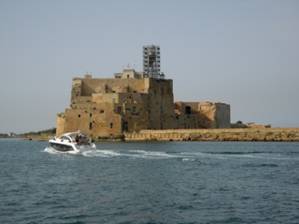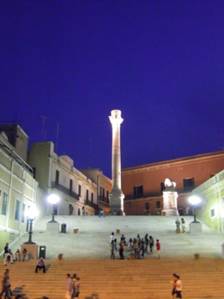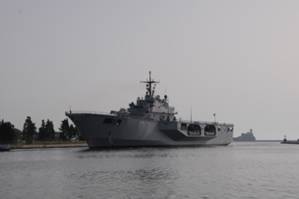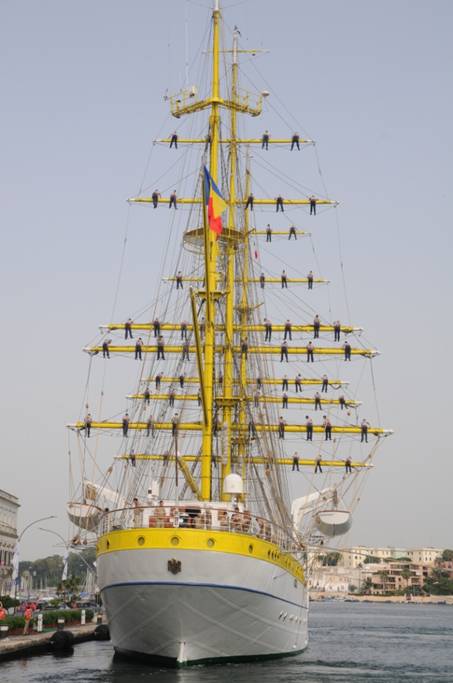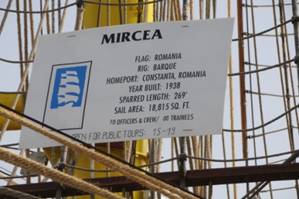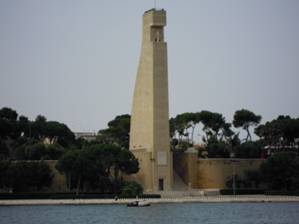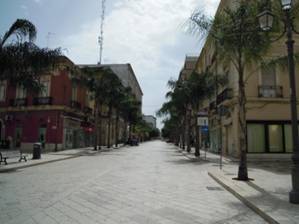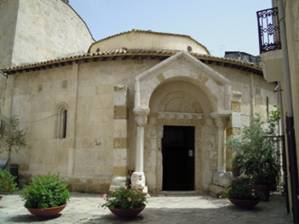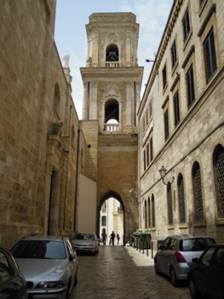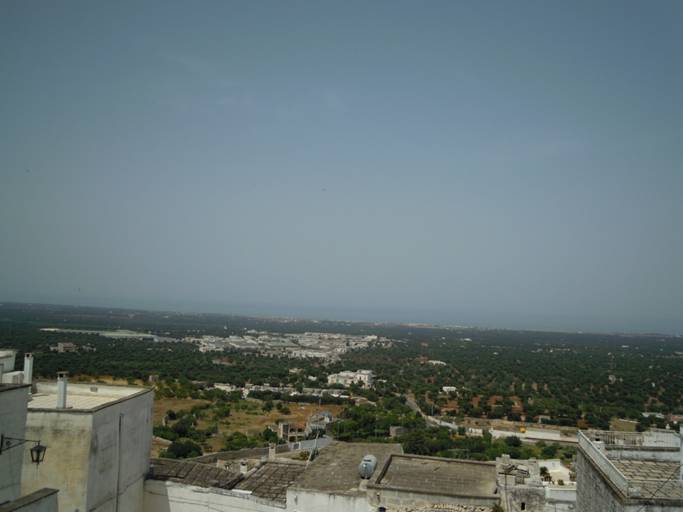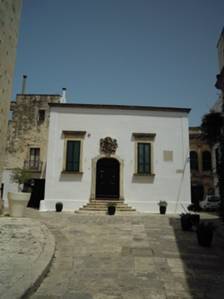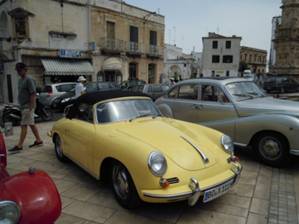Brindisi and surrounds

|
Brindisi is a large natural harbor that has been in use
since the Messapic Age. The name of the town comes from the term brendan which
mean deer head referring to the shape of the harbor. The famous Appian Way
from Rome terminates in the harbor and is marked by two Roman columns at the
top of the stairs. During the Roman times the harbor was used as a military
base to support the conquest to the east into Greece and Asia. After the collapse of the Roman Empire the town was sacked several
times by the Saracen pirates and then conquered by the Normans in 1071.
However it continued to be used for trade with the east. Brindisi also became
the place where the Pilgrims sailed for the Holy Land and was where all the
Crusades left from. In the town there are small temples (Templars) which
murals depicting various travels. In 1491 a large fort was completed at the
entrance to the harbor, Castello del Mare. Under Spanish rule the city declined and remained that until
the second half of the 19th century. Then it was annexed into the
Reign of Italy in 1860 and the Suez Canal was also opened. With that it became
the “Valigie delle Indie”. Mussolini had some improvements made
and the “Momumento al Marinalo d’Italia” was built. Between September
1943 and February 1944 the town served as the Capital of Italy. Today it is still an important seaport. Besides the
industrial complex near the entrance it is one of the ports for the Italian
Marines, basing their helicopter carrier here. Local cruise ships dock here as
well as the long haul ferries to Greece and Turkey. Just before we arrived the
annual Brindisi to Korfu (Greece) regatta left. The city itself today is an old town with meandering
streets. One of the main streets now is dedicated to large stores and cafes
with minimal car traffic. Along the waterfront there are cafes and a walking
promenade that the Italian and tourist heavily use in the evening to get out of
there hot houses and have some Gelato. Much different than the Spanish towns
where the waterfront on Friday and Sat night is a big party with lots of
drinking and trash dropping. Here it is a family event and never did we have
any issues even with the boat berthed right in the middle of it. We also took a day trip to Ostuni, the white city, up the
coast. We did not pick the right day, Monday. Many of the shops were closed
on Mondays since there are open on the weekend, not like Switzerland where
Sunday the country closes. Surrounding Ostuni are vast groves of olive trees
dating back hundreds of years. It is impossible for me to guess the number of
trees we drove past on the way. The town of Ostuni is built on a hill, again
with old origins. We only stayed a few hours and I think we were able to see
most things of interest. Not really a destination point on its own but worth a
day visit if you are in the area. Weather wise summer is beginning and temps around 30 (85)
degrees are now common with high humidity. The Italian midday break where all
the shops close from around 13:00 to 16:00 makes sense. The streets are
deserted then except for the café customers. Nighttime brings some relief but
also the mosquitoes emerge. Screens are a necessity on the boat and A/C even
better.
Castello del Mare at the entrance to the main harbor.
Southern end of Appian Way depicted by the columns. This
was the view from the stern of the boat where we were berthed. Remember that
Ostia where we began this trip was the other end of the Appian Way.
Italian Marines helicopter carrier entering the harbor with
tug assist.
Romania’s tall ship and training vessel. Trainees out
on the spars as the ship leaves.
I noticed they write in the number of trainees, maybe not
everyone gets down safely?
Tribute to the Italian sailors. It is styled after the
rudder used on the fishing boats.
Shopping street around midday. Notice only tourist would be
walking around in the heat.
Norman temple “Tempio di S.Giovanni Sepolcro”.
Inside are faint wall murals from the crusade times
One of the entrances to the walled city.
One of the views from Ostuni looking toward the sea and over
the olive trees.
Typical white Ostuni building.
Old car rally that made a stop in Ostuni. Bunch of old guys
in old cars from Switzerland, Germany and Italy. They all started and left,
amazing. |
